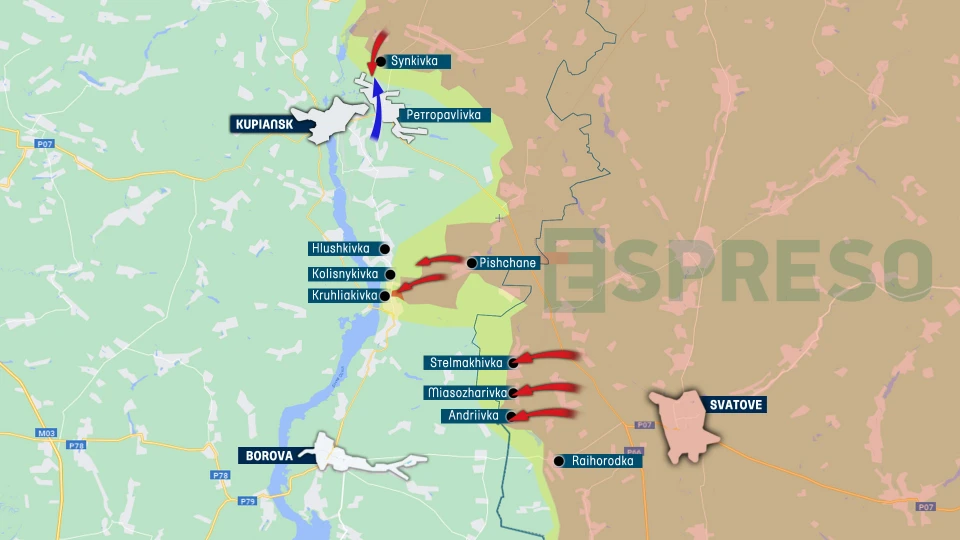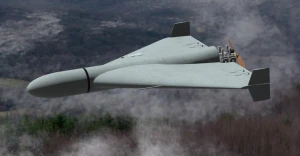
Russia's chances of advancing to Kupyansk fade, Ukraine clarifies its stance on nuclear weapons. Serhiy Zgurets's column
The article in Bild discussing Ukraine's purported desire to develop nuclear weapons appears highly damaging, as Ukraine has no intention of pursuing such a path. The technological process involved is far too complex. Consequently, this publication is both ill-timed and illogical, given Ukraine's ongoing efforts to secure its safety
Volodymyr Zelenskyy's visit to Europe and a new U.S. military aid package
President of Ukraine Volodymyr Zelenskyy addressed a meeting of the European Council, where he presented the Victory Plan, or strategy for forcing Russia to engage in real diplomacy. He said that Ukraine is ready for diplomacy, but we (Ukrainians - ed.) must be strong. This means that the implementation of many components of the Victory Plan will rely on broader and timely assistance from Ukraine's partners. In particular, on the supply of weapons and ammunition. And also on the readiness for decisive action. The priority is to lift the ban on Ukraine's use of Western weapons for strikes deep within Russian territory. In this regard, some countries have expressed support for Ukraine's Victory Plan, notably Sweden and the Netherlands, although they have also indicated certain restrictions.
We also know that immediately after the Plan was presented in the Parliament, the United States announced another package of military assistance to Ukraine. This package is bigger than the previous one, but it has certain peculiarities. The military assistance package was announced in the amount of $425 million and these funds will be used to supply those types of weapons that are already in the arsenal of the U.S. Army and can be quickly transferred to Ukraine.
It is significant to note that there are grounds to assert that the U.S. has finally delivered the third Patriot air defense system to Ukraine. Our analysis of information from the Pentagon indicates that the transfer of equipment to Ukraine is ongoing. On September 26, it was reported that the United States had supplied two Patriot air defense systems, and on October 15, confirmation emerged that Ukraine had received a total of three such systems. This information is publicly available on the Pentagon's official website. Therefore, based on this data, we can conclude that the United States has successfully transferred three Patriot systems to Ukraine.
In addition to the Patriot, other components of the US military aid package are quite predictable. These include Nasam ammunition, guided missiles for other air defense systems, 155-mm ammunition, a significant number of missiles for Stinger air defense systems, and a significant number of HMMWVs, small arms, and more. All this is really needed on the battlefield.
Ukraine has no plans to build nuclear weapons
The Ukrainian president's visit to Europe coincided with a troubling article in Bild, which claims that a senior Ukrainian official, quoted by Julian Röpcke, stated that Ukraine possesses the materials and knowledge necessary to develop a nuclear weapon. The official purportedly claimed that, with the appropriate order, it would take only a few weeks to produce the first nuclear device. This publication is highly damaging, as Ukraine has no intentions of creating nuclear weapons; the technological process involved is far too complex. Moreover, I anticipate that this article will prompt Russian media to actively discuss the information, potentially reviving references to the "dirty bomb," a narrative Russia has previously used to exert pressure on its European partners and threaten the use of tactical nuclear weapons. Therefore, this publication is both ill-timed and illogical, given Ukraine's commitment to ensuring its security.
Heavy fighting in the Kharkiv region
Yuriy Fedorenko, commander of Ukraine's Achilles attack battalion of the 92nd separate assault brigade named after Ivan Sirko, said that Russia has the ability to use its aviation in battles in the Kharkiv region. In particular, Russians are actively using UAVs. This is a problem for Ukrainian troops. In particular, for logistics crossings, as Russia is constantly trying to attack these routes. According to Fedorenko, in these conditions, the Ukrainian Defense Forces, with the assistance of civilian engineers, were able to quickly restore logistics routes after Russia's attacks. According to Fedorenko, Russians are also actively using anti-aircraft guns on the left bank of the Kupiansk region. Russian troops are trying to completely wipe out the settlements and are also attacking the city of Kupiansk. To secure the result, they are trying to act in a combined manner. They are using various tactics of warfare, amassing forces and resources.

Photo: Map of combat operations in the Kupiansk sector as of October 17.
Fedorenko said that one of these types is the movement of Russian infantry groups from one position to another. The Ukrainian defense forces are trying to detect such groups in a timely manner and work on them. The Russian army also tries to move through the forest strips in small groups of 2-3 people. In this way, they are trying to reduce the firepower of Ukraine's artillery and other means of destruction. Fedorenko said that as a result of the accumulation of such small groups into larger ones, Russian troops reach the first contact line and then try to drive Ukrainian Defense Forces units from their positions, while using lightly armored vehicles. Most of this equipment is destroyed by the Ukrainian Defense Forces. Fedorenko noted that the Ukrainian Defense Forces have recently managed to significantly halt Russia's advance. Now the Defense Forces units are trying to prevent Russia from launching such intensive assault operations. Fedorenko is convinced that in the near future the Russian army will not be able to take the bridgehead and advance toward Kupiansk.
UAV functionality increase will lead to expanded combat use
Yuriy Fedorenko said that the Achilles UAV strike battalion is now fully equipped with weapons. He noted that the battalion has acquired additional capabilities through training and formation of additional flight groups of UAV operators. This has led to an increase in the use of drones on a daily basis. Fedorenko also noted that the state program for providing units with munitions has increased. Donations from civilians and volunteer funds play a key role in the provision of munitions. He noted that the provision of the relevant units should not be entirely relied on civilians. Because war is always very expensive.
A single drone can cost up to $1,000 to fly a mission. In particular, the cost of the drone is up to $500 and the same amount for components and ammunition. However, compared to the results that can be achieved by using such a drone, these are simply incommensurable. Fedorenko noted that as a battalion commander, he, his staff, headquarters and command are always in the process of training on the battlefield. In particular, this includes constant monitoring of what other units are doing, interaction and communication, as well as monitoring and analyzing what Russia is doing on the battlefield. It is also very important to communicate with manufacturers who not only produce equipment for the needs of the Ukrainian Defense Forces, but also constantly modernize it.
As a result of this cooperation, in the summer of 2024, units of the Ukrainian Defense Forces shot down Russian reconnaissance drones with other UAVs. This is a very important step. Under such conditions, it is difficult for Russia to adjust the fire of artillery and other means of destruction. Also, the UAVs of the Ukrainian Defense Forces have begun to hit other Russian aircraft. In particular, helicopters. Therefore, as Fedorenko noted, with the increase in the functionality and types of UAVs, the use of this type of weapon will scale. The number of UAVs used on the battlefield is already growing and will continue to grow.
- News














































